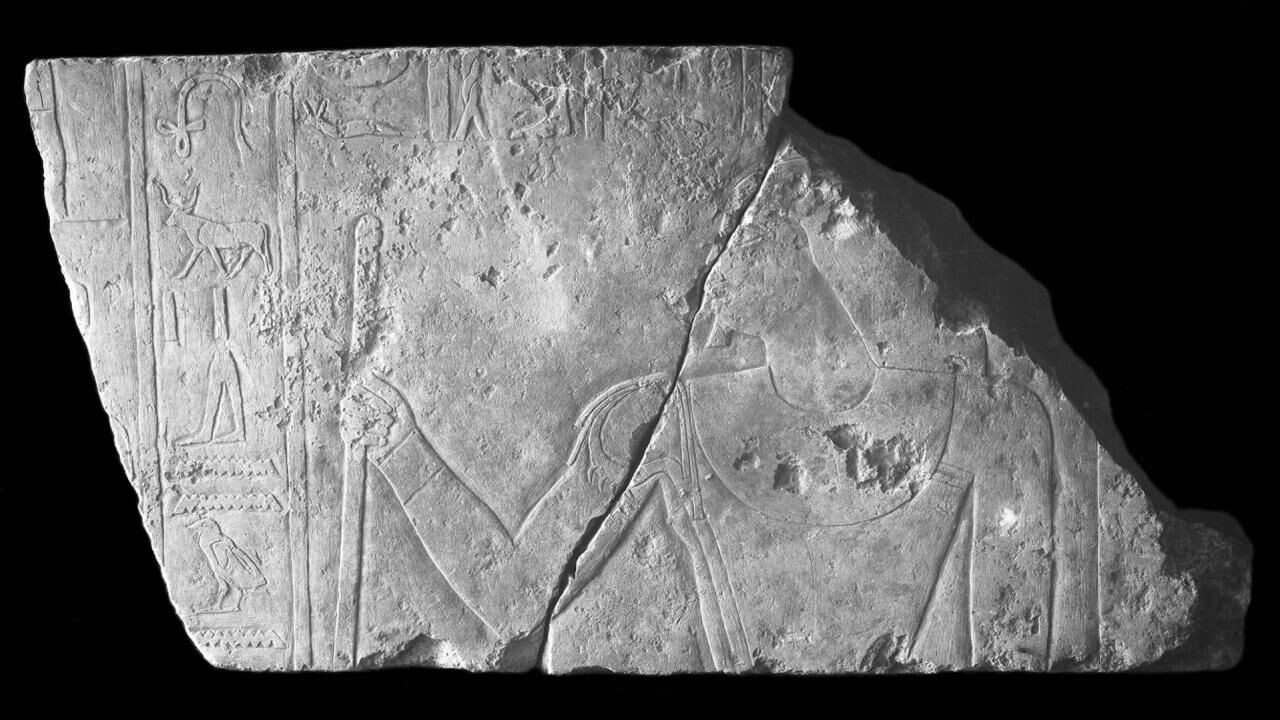
The limestone superstructure of the mastaba of Qar has almost entirely disappeared, but may be traced in its lowest course to a width of ca. 7.50 m. east-west along its northern edge. Its north-south dimension can no longer be traced. Except for the upper part of the approach stairway, the complex is excavated in the natural rock just north of the large mastaba tomb of Kawab.

The superstructure, to the extent that there may have been one, has been destroyed. The chapel complex of Qar as it remains consists of a court in the substructure open to the sky, the walls capped by a cornice, with an interior chamber to its south, off which open the two chambers to the west and the east. The court is entered from the surface by a flight of steps descending from north to south.

In Court C, two fine limestone blocks span the south face and are neatly joined at the center over the central rock-cut supporting pillar, total length ca. 6.27 m., inscribed in three lines in sunk relief as follows: Left half, reading right to left with a seated figure of Qar with full wig, broad collar, and bracelets, facing right with a staff at left end. Right half, reading left to right with a similar seated figure of Qar facing left at right end.

This inner room is wholly rock-cut. Its inscriptions and reliefs are in part badly preserved and in places not fully legible.

The entire east wall is in poor condition. The reliefs and inscriptions are partly cut in the natural rock and were originally completed in plaster which has now, in part, fallen off. The decoration extends over the entrance doorway from Room D.

This chamber is cut in the rock and was never decorated or inscribed. An Arabic graffito was noted at the time of discovery on the west wall. Running east and slightly north from the east side of Room D, its length (including jambs) is 3.60 m. by about 1.10 m. wide.

There are four shafts with burial chambers within the area of the reconstructed mastaba. The chief shaft with the burial of Qar descends just south of the serdab and north of the western interior chapel chamber. The second shaft lies just west of the offering slab in the alcove of the eastern interior subterranean chapel chamber, and would seem to be associated with this chapel, perhaps as the burial of Qar’s wife.

Containing offering stones and basins and a head from an anthropoid sarcophagus, small fragments of relief, faience vessels, amulets, bowls, jars wooden model figurines and basalt statue pieces, etc.

Qar's mother was Khenut, his wife's name is Gefi, who was a prophetess of Hathor. One of his sons bears the name of Idu. It is generally accepted that Qar is the father of the Idu of the mastaba G 7I02. The opposite, where Idu would be the father of Qar, also cannot be excluded. In the chapel of Qar, the Idu is represented with his sister Benjet. There is a Benjet in the chapel of Idu, where she is presented as his daughter. Another sister is called Tjetuet.